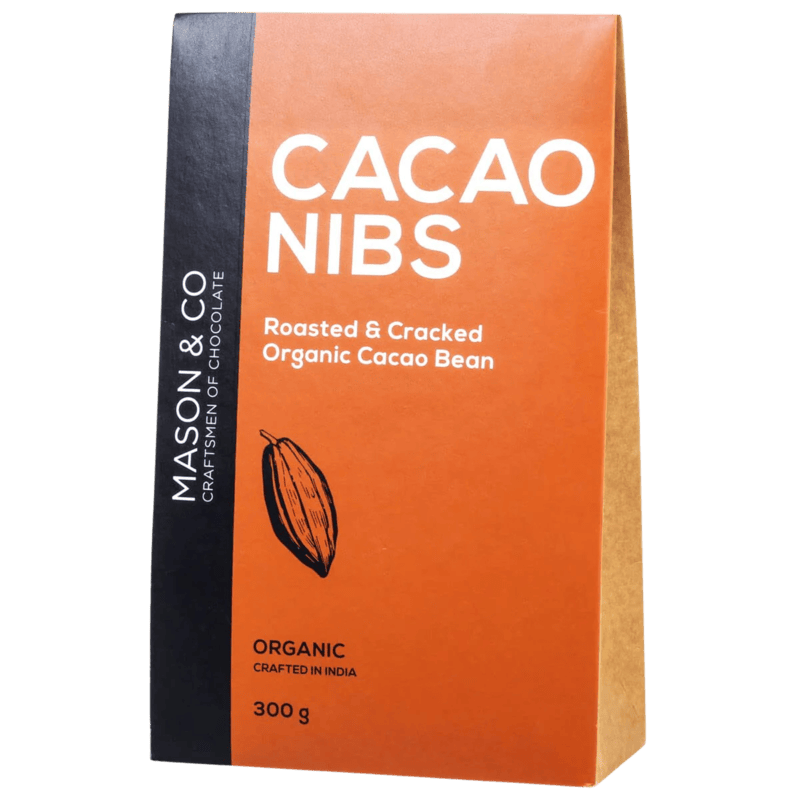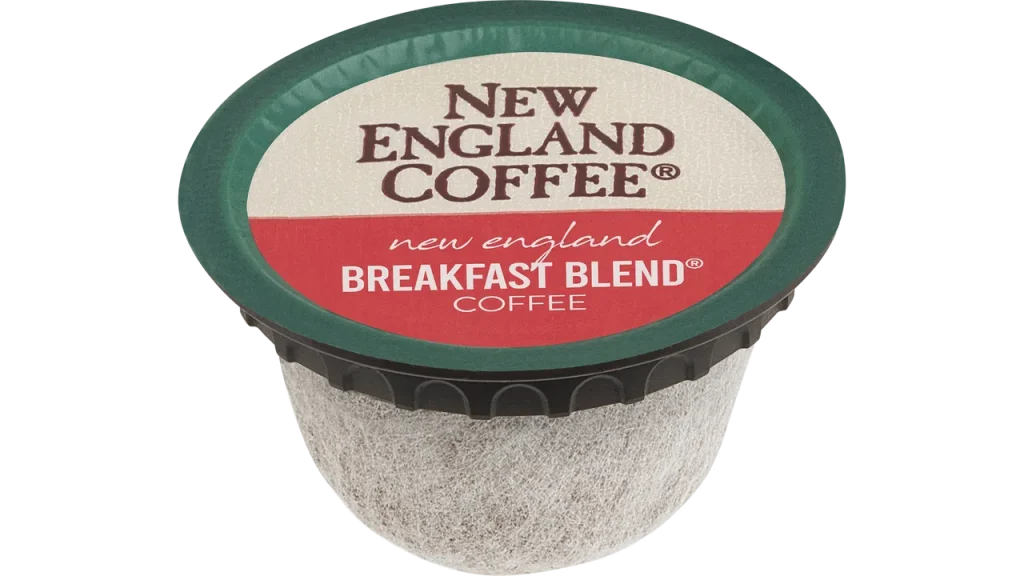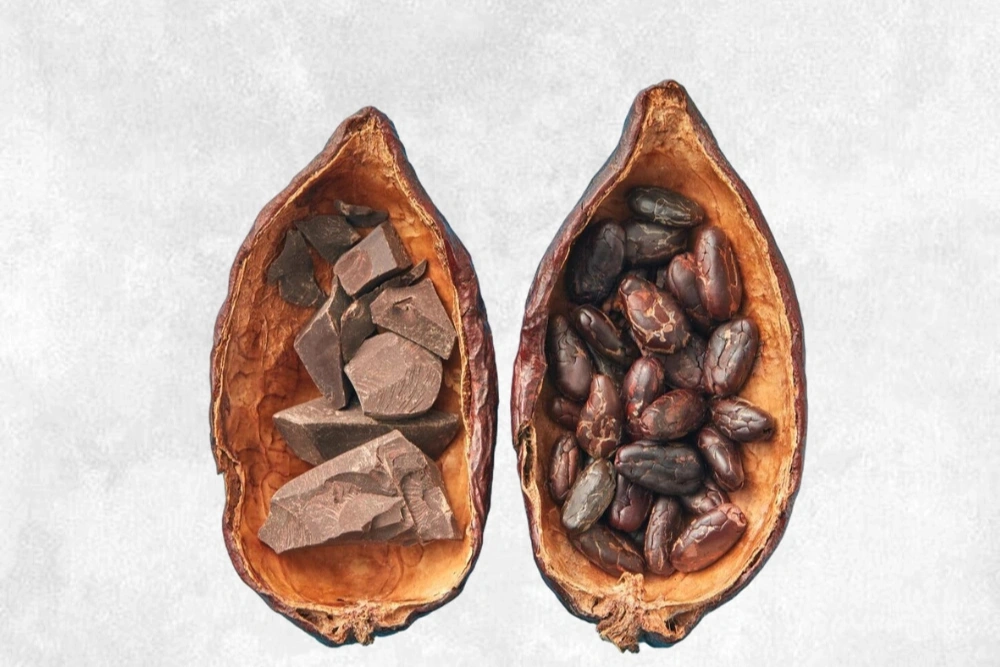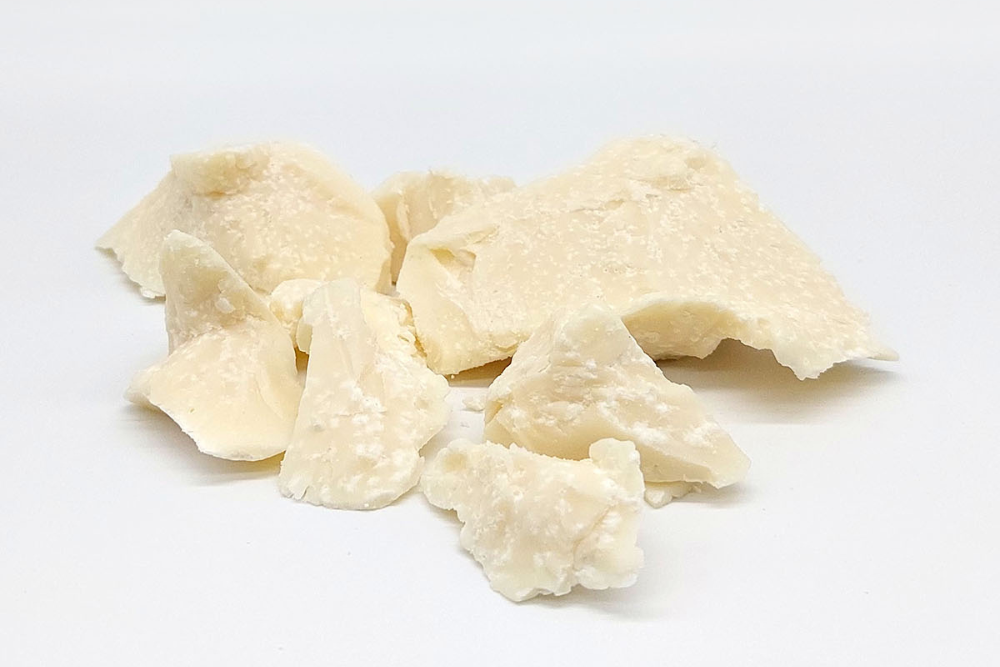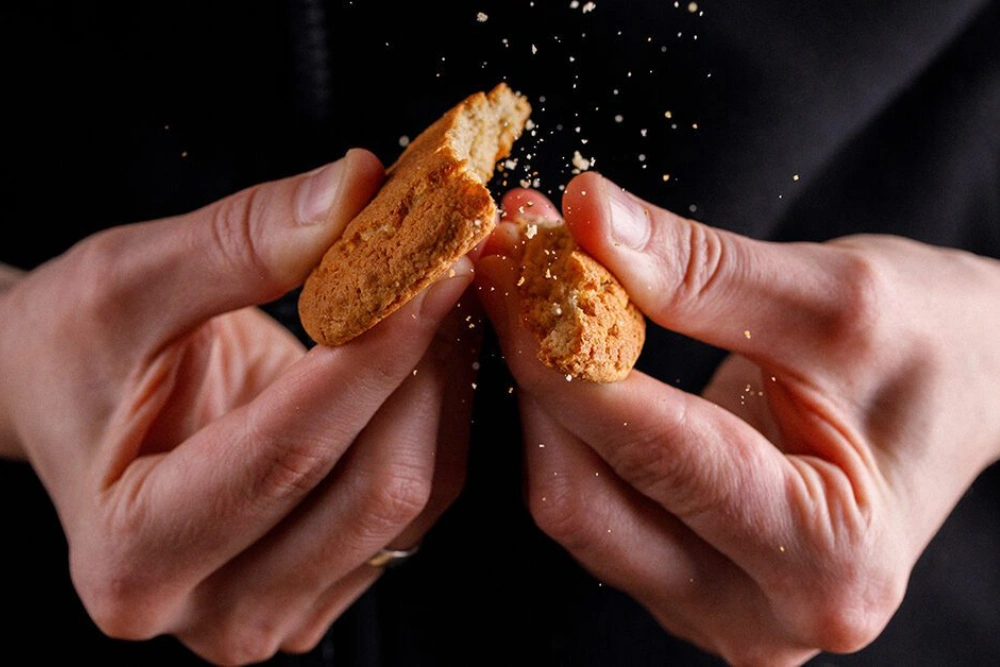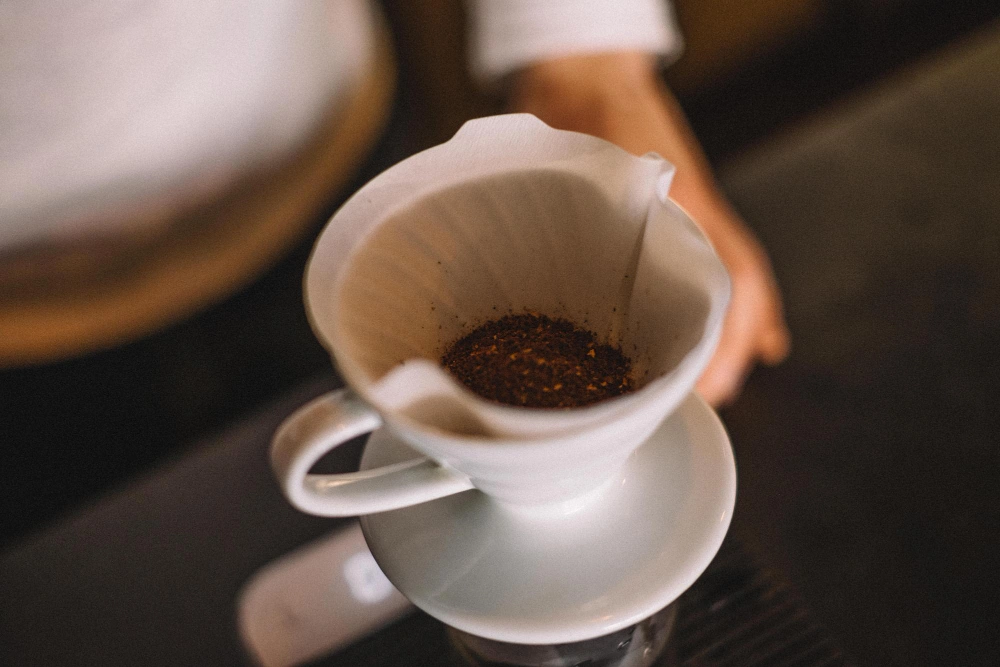Comparing CBS and Cocoa Nibs : Fiber, Polyphenols and Methylxanthines
Cocoa bean shell (CBS) and cocoa nibs are two distinct fractions of the cocoa bean, each with unique nutritional and functional profiles that influence their potential applications in the food industry. Understanding these differences is essential for positioning CBS as a viable upcycled food ingredient.
1. Dietary Fiber
CBS: Contains exceptionally high fiber (45–60% dry weight), mainly insoluble fiber with limited soluble fractions.
Industrial relevance: Enhances satiety, reduces caloric density, and supports digestive health. This makes CBS a potential high-fiber claim ingredient in formulations.
Nibs: Fiber content is much lower, with higher focus on fat and protein fractions.
2. Polyphenols
CBS: Approximately 4–8%, including catechins and epicatechins. These compounds contribute to antioxidant activity and can influence bitterness and astringency in food applications.
Nibs: Higher in polyphenols due to higher fat and protein content, making them the primary source of cocoa’s signature flavor and antioxidant properties.
3. Methylxanthines (Theobromine & Caffeine)
CBS: Typically 0.2–1% theobromine and 0.05–0.3% caffeine, depending on origin and processing. While lower than nibs, these compounds still impart stimulant effects and need careful labeling for sensitive consumer groups.
Nibs: Significantly higher levels of theobromine and caffeine, as they are the main stimulant fraction of cocoa beans.
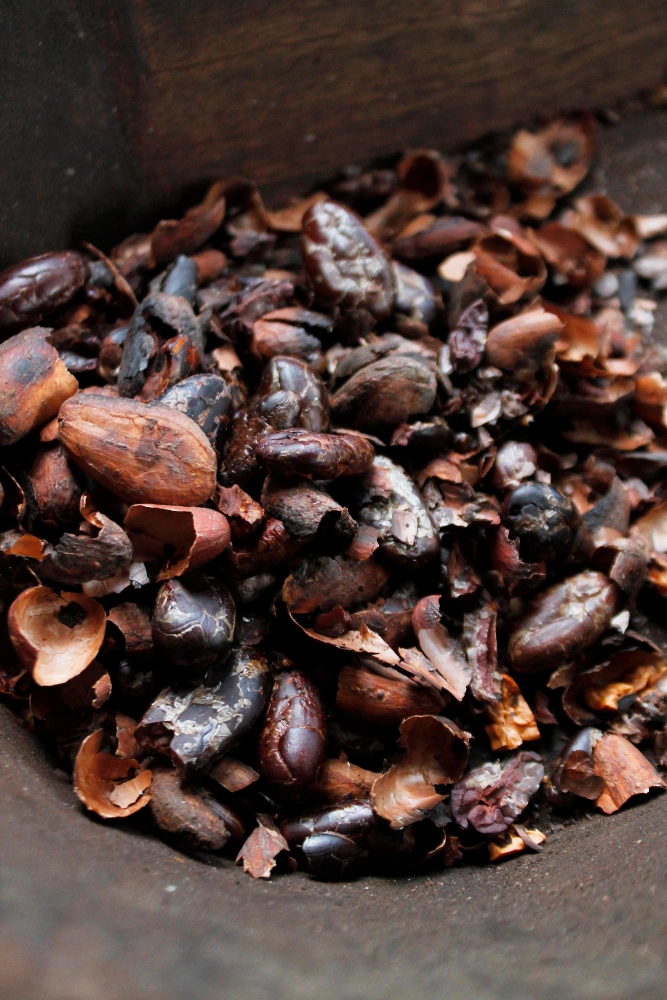
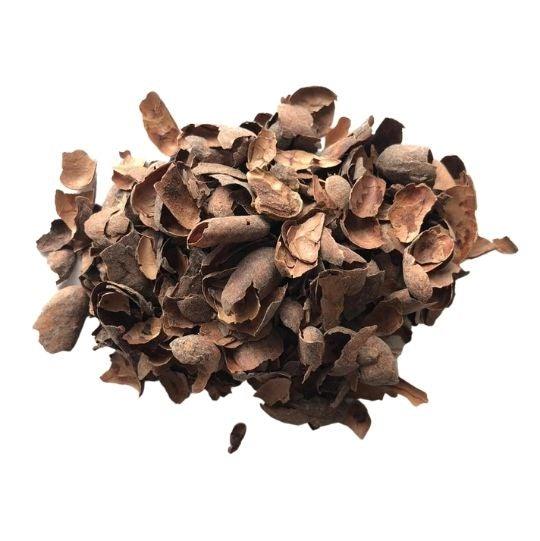
The Role of Cocoa Bean Shell (CBS) in the Circular Economy and Sustainability
Cocoa bean shell (CBS), once considered a waste stream of chocolate manufacturing, is now being upcycled into a valuable ingredient within the framework of the circular economy. Through upcycling, CBS is transformed into a new source of raw material for sustainable food and non-food applications.
Key applications include :
Fiber-rich films and packaging materials
Functional ingredients for bakery, snacks and beverages
Natural additives for animal feed and bio-based industries
Roadmap for Upcycling Cocoa Bean Shell :
Collection & Cleaning: Winnowing after roasting to remove impurities.
Standardization: Defining particle size, moisture and processing parameters.
Safety & Quality Assurance : COA, microbiological testing, and compliance with food/non-food standards.
Formulation pilot: Bread/biscuit, chocolate/bar, beverages: Step-up dosing and bitterness control.
Advanced Applications : Biodegradable films, bio-packaging, compostables and pharmaceutical excipients.
What Is Cocoa Bean Shell (CBS) and How Is It Produced?
Cocoa bean shell (CBS) is the fibrous outer layer of the cocoa bean that is separated after roasting, cracking and winnowing. As a by-product of the chocolate-making process, CBS is often upcycled into a valuable food ingredient.
This shell is naturally rich in dietary fiber, polyphenols and methylxanthines (especially theobromine), giving it both nutritional and functional potential. Today, with the rise of upcycling in the food industry, CBS has evolved from a processing residue into a sustainable, health-oriented raw material for food and non-food applications.
Insoluble/Soluble Fiber and Functional Effects
CBS is particularly rich in dietary fiber (both insoluble and soluble) :
Insoluble fiber : Enhances texture, reduces syneresis in bakery/dairy systems, and increases bulk and structural stability.
Soluble fiber : Provides satiety, regulates digestion, and supports the development of gut-friendly formulations.
From an industrial perspective, CBS fiber contributes to improved texture, extended shelf-life and nutritional claims.
Polyphenols (Catechins, Epicatechins) and Antioxidant Capacity
CBS is a valuable source of cocoa polyphenols, especially catechins :
These compounds reduce oxidative stress, contributing to health benefits.
Polyphenols also influence flavor, sometimes adding bitterness or astringency, requiring optimization in formulations.
Studies show CBS polyphenols can stabilize fats and oils, preventing rancidity and extending product shelf-life.
Natural Aromatic Compounds and Cocoa-Like Flavor Notes
A lesser-known attribute of CBS is its natural cocoa-like aroma :
Contains volatile fractions (pyrazines, aldehydes) formed during roasting.
Properly formulated, CBS can enrich flavor profiles in bakery, biscuits, or beverages.
From a marketing standpoint, this enhances product differentiation and consumer acceptance.
Nutritional Profile and Bioactive Compounds of Cocoa Bean Shell (CBS)
Contrary to the common perception of CBS as a mere processing residue, cocoa bean shell is a rich source of bioactive compounds with significant potential for functional food innovation. Its composition makes it relevant both nutritionally and technologically in food formulations.
By combining fiber, polyphenols, and aroma compounds, CBS evolves into a multi-functional ingredient that delivers nutritional benefits, technological functionality, and marketing value. This dual role makes it an attractive solution for brands targeting both health-oriented and sustainability-driven consumers.
Dairy and Beverages: Better Suspension and Improved Mouthfeel
Suspension stability: Soluble fiber in CBS functions as a natural stabilizer, reducing sedimentation in cocoa-based drinks.
Mouthfeel improvement: CBS enhances creaminess and provides higher satiety in dairy and plant-based beverages.
Industrial benefit: Reduced need for synthetic stabilizers and emulsifiers, supporting Clean Label claims.
Bread and Cakes: Fiber Enrichment, Texture Control, and Bitterness Management
- Fiber fortification: Partial flour replacement with CBS boosts total fiber content and enhances nutritional value.
- Texture optimization: CBS fiber improves dough rheology, water absorption, and structural stability.
- Bitterness management: Controlled inclusion levels allow CBS to enhance flavor depth without overpowering bitterness, ensuring a balanced sensory profile.
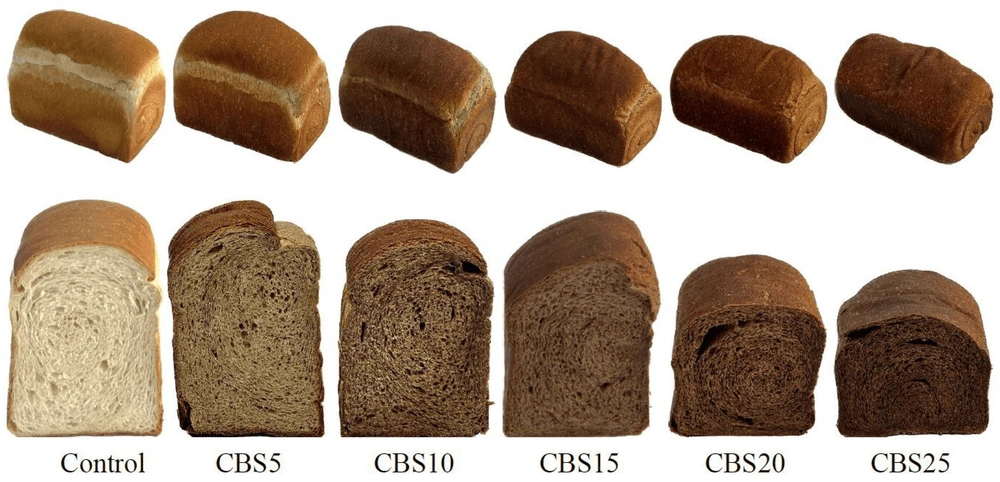
Application of Cocoa Bean Shell (CBS) in Food Formulations
Cocoa bean shell (CBS) is no longer viewed as a low-value Waste. Instead, it is increasingly recognized as a multi-functional ingredient that can be applied across food and even non-food industries. Its unique combination of fiber, polyphenols, and bioactive compounds makes it a driver of both product innovation and circular economy goals.
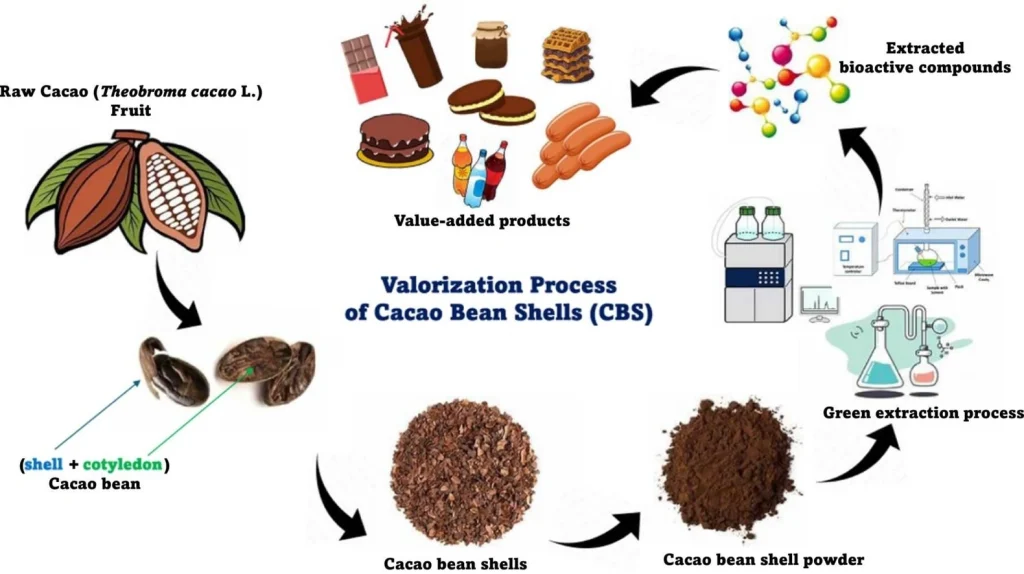
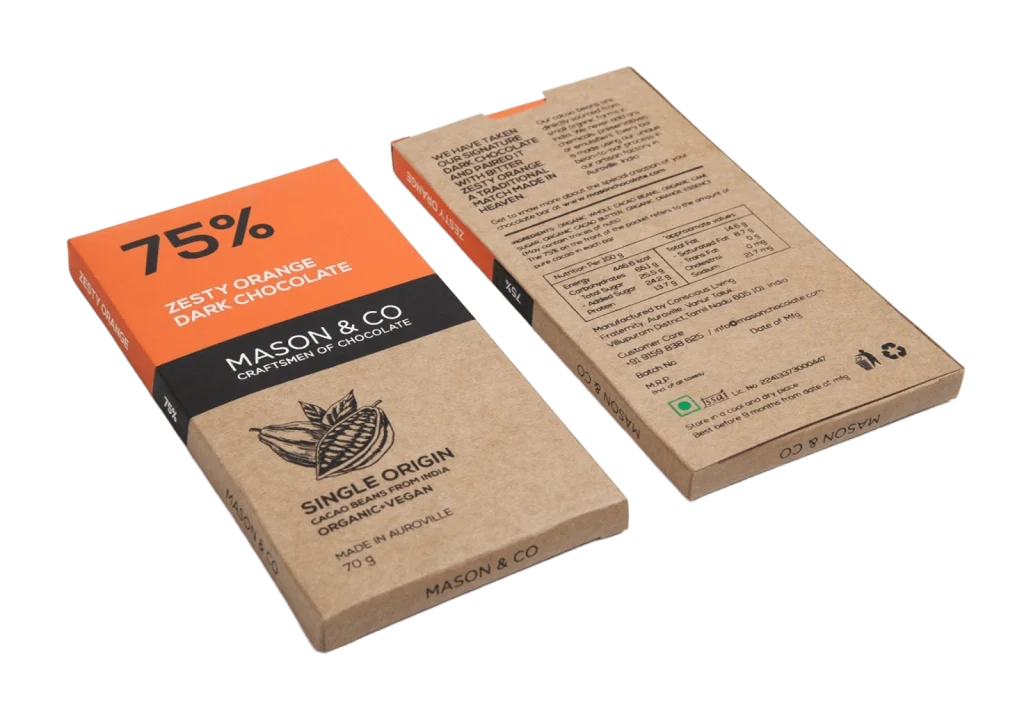
Non-food Applications: Sustainable Packaging with Innovative Biopolymers
- Natural biopolymer source : Cocoa Bean Shell (CBS) is rich in bioactive compounds, making it suitable for the production of biodegradable films and coatings.
- Antioxidant function : These bio-based layers not only reduce dependency on plastics but can also extend the shelf life of packaged foods.
- Sustainable packaging : Replacing conventional plastics with CBS-based biopolymers represents a key step in waste reduction and circular economy strategies, supporting brands in achieving their global green goals.
CBS as a Sustainability and ESG Enabler in the Supply Chain
Traditionally viewed as waste, CBS is now being upcycled into a valuable raw material across food and non-food industries. Its integration reduces waste volumes, mitigates CO₂ emissions, and creates new business opportunities in green innovation.
Key ESG Contributions of CBS:
Environment (E): Reduces waste and carbon emissions within the cocoa supply chain.
Social (S): Generates added value for local farming communities through new product streams and income opportunities.
Governance (G): Enhances corporate ESG reporting, transparency, and responsible sourcing of raw materials.
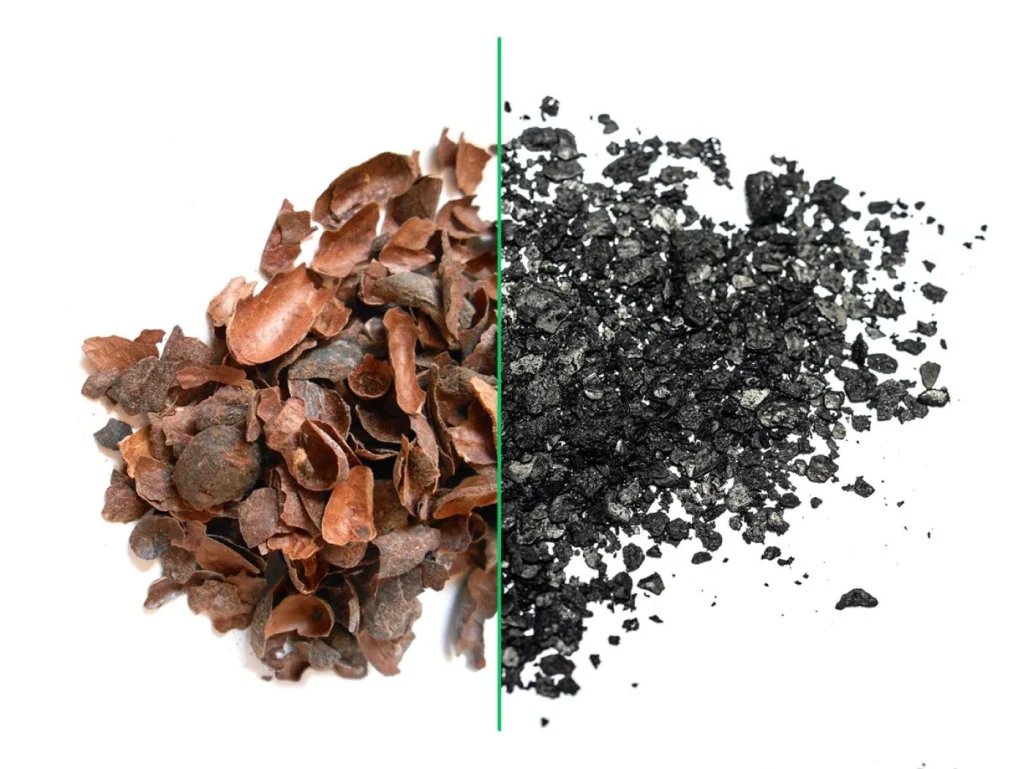
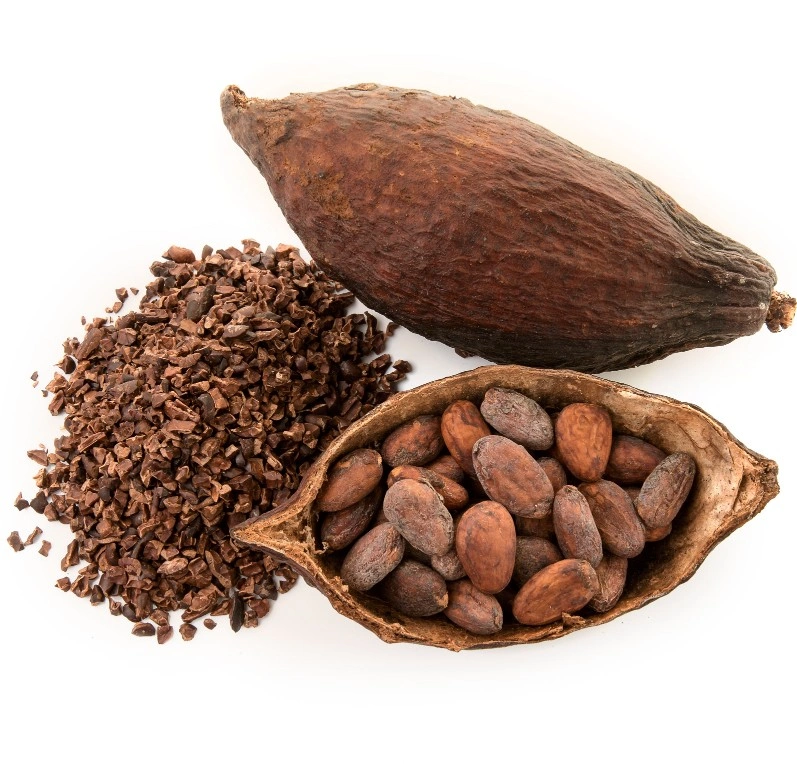
CBS and Its Role in Sustainability and Supply Chain Transparency
In the chocolate and cocoa industry, one of the most critical challenges is ensuring ethical sourcing and sustainability in the supply chain. Cocoa bean shell (CBS), though often seen as a by-product, can actually contribute to strengthening traceability, transparency, and responsible sourcing practices.
Documentation and Verification: From farm-level innovation to processing, CBS can be integrated into sustainability reporting, boosting consumer trust and investor confidence.
Circular Economy Integration: Utilizing CBS as an upcycled ingredient reinforces corporate commitments to environmental and social responsibility.
Global Competitiveness: This approach not only reduces pressure on natural resources but also improves social credibility and enhances brand reputation, helping companies achieve stronger positioning in global markets.
CBS : Waste or Opportunity ? The Role of Cocoa Bean Shell in Carbon Reduction and Social Responsibility
Cocoa bean shell (CBS) is not just a simple by-product. When managed effectively, it becomes a powerful tool for waste reduction, supply chain sustainability, and social impact. Within the framework of the circular economy, CBS aligns with corporate social responsibility (CSR) and ESG goals, supporting both greener operations and long-term business value.
Preclinical Evidence : From Animal Models to Human Health Challenges
Metabolic control : CBS fiber supplementation in obese mice reduced blood glucose and improved insulin resistance.
Lipid metabolism: Polyphenol-rich CBS extracts improved lipid profiles, reduced triglycerides, and enhanced glucose metabolism in animal models.
Human evidence (limited): Early trials suggest CBS may support satiety and postprandial glycemic control, but more extensive studies are needed before direct clinical recommendations can be made.
Caution in making health claims
- Proper statement: Use functional terms rather than therapeutic claims; for example:
CBS is a source of fiber and may help to promote satiety.
Contains polyphenols that may support the antioxidant capacity of the diet.
Safety: The presence of theobromine and caffeine may cause adverse effects in sensitive individuals and is dangerous to pets. Contaminants such as ochratoxin A should also be managed through quality control.
🔗 Review of CBS composition and biological effects in Antioxidants (2023)
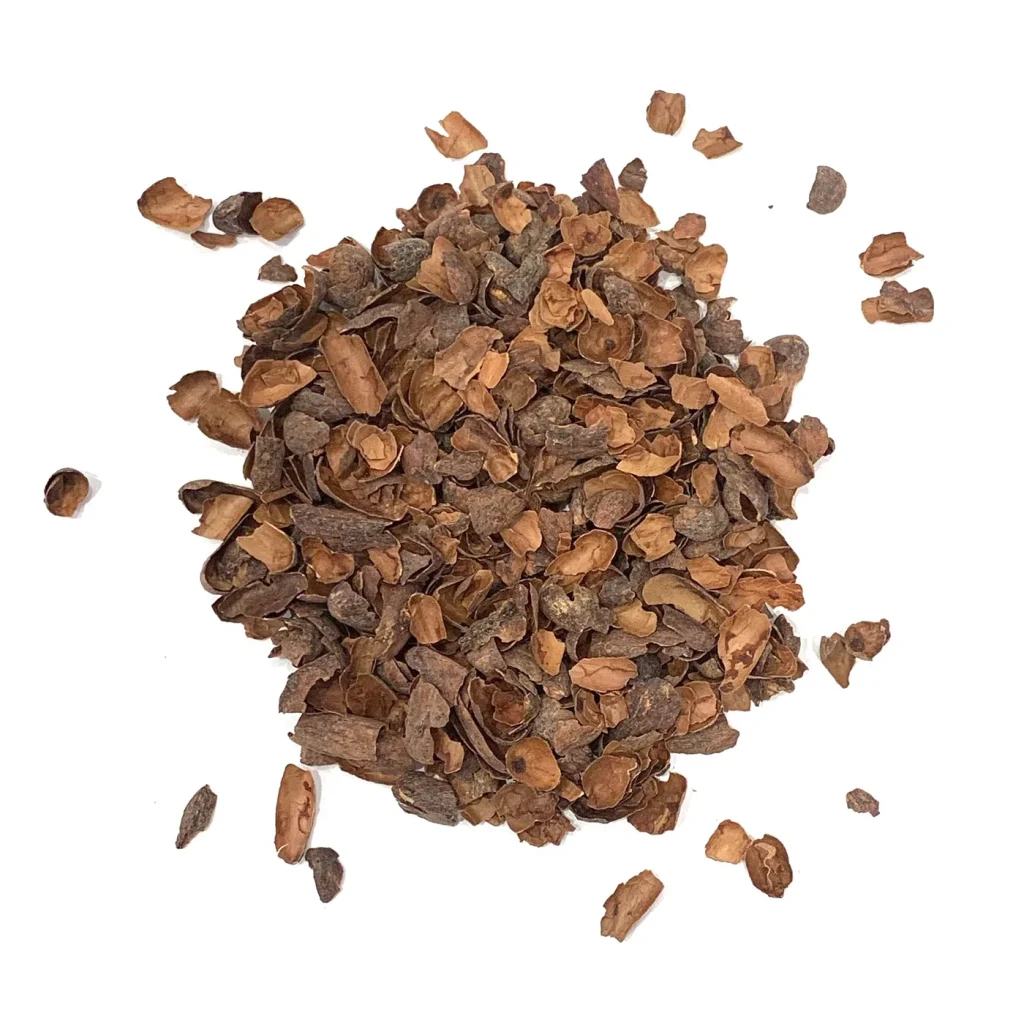
Scientific Evidence on Metabolic and Anti-Inflammatory Effects of CBS
Cocoa bean shell (CBS) is rich in fiber, polyphenols and methylxanthines, compounds known to influence lipid metabolism, insulin resistance and inflammatory pathways. Experimental studies using extracts and fiber fractions of CBS suggest potential benefits for metabolic health.
Pre-Processing of CBS (Milling / Sieving)
- Fiber structure: 50–65% total fiber; proper particle size reduction required for uniform dispersion.
- Medium-size grinding prevents sandy texture and enhances smoothness.
- Fine grinding increases bioaccessibility of polyphenols but may intensify bitterness, requiring flavor balancing.
Recommended Experimental Ranges by Product Category
- Beverages (cocoa-based): 0.6–1% theobromine; fiber inclusion 6–13.5 g/100 g dry product.
- Bakery products (bread/biscuits): Partial flour replacement (5–15%), improving fiber and antioxidant levels while maintaining acceptable sensory quality.
- Confectionery/cereal bars: 2–8% CBS addition for fiber enrichment and antioxidant claims.
- Functional foods/supplements: Polyphenol-rich extracts for nutraceutical positioning.
Synergy with Sweeteners/Fats/Water for Balanced Flavor and Texture
- Sweeteners: Help to mask CBS bitterness (due to theobromine/caffeine) and improve palatability.
- Fats & emulsifiers: Reduce perception of astringency, enhance mouthfeel.
- Water binding: CBS has high hydration capacity, contributing to dough stability and softer textures.
Formulation Guide : Dosage, Processing and Bitterness Control of CBS
Cocoa bean shell (CBS) is a source of fiber, polyphenols and methylxanthines that can influence insulin resistance, lipid metabolism and inflammatory pathways. Extracts and fiber fractions of CBS show antioxidant and metabolic benefits, but correct formulation is critical to ensure both functionality and consumer acceptance.
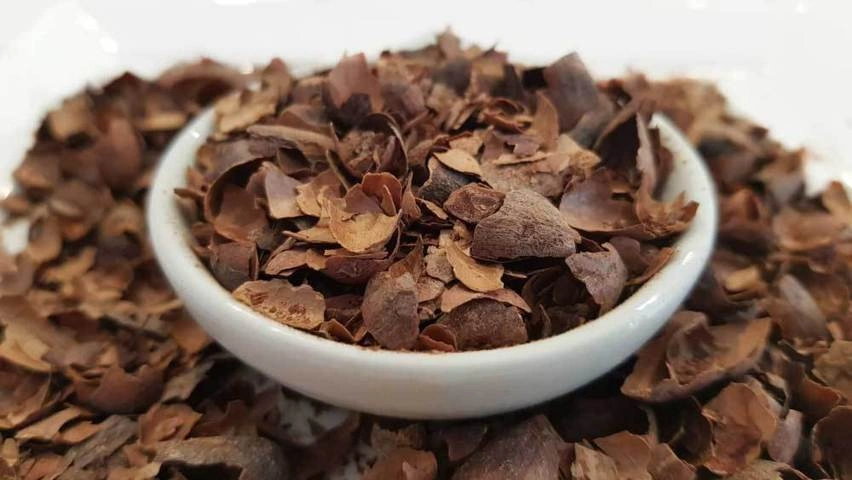
Safety and Quality Standards for Cocoa Bean Shell (CBS)

Contaminants and Quality Control
Mycotoxins (OTA): Ochratoxin A can accumulate in CBS during fermentation and drying. Proper cleaning and winnowing can reduce OTA levels by 48–100%. EU regulations set the OTA limit at 2 mg/kg for cocoa-based products.
Heavy metals: Cadmium and lead monitoring is critical, especially in cocoa from certain regions.
Microbial contamination: Aspergillus and Eurotium species must be controlled via proper storage and hygiene practices.
HACCP & COA: Implementation of HACCP protocols and availability of Certificates of Analysis are required to ensure product safety.
Caffeine & Theobromine: Labeling and Sensitivities
Typical content in CBS: 0.6–2.7% theobromine and 0.1–1.0% caffeine.
Sensitivity: Both compounds may cause adverse effects in children, pregnant women, and sensitive consumers. Pets (especially dogs and cats) are highly vulnerable.
Labeling: Products containing CBS should declare stimulant content transparently to meet consumer safety expectations.
Specifications and Buyer Requirements
Moisture content: 5–9% (to ensure stability and prevent mold growth).
Ash content: 7–10% depending on origin.
Particle size: Defined by buyer requirements (affecting solubility, sensory quality, and processing).
Compliance: Buyers often request international certifications (HACCP, ISO, Fairtrade).
What are the main limitations of using cocoa bean shell (CBS) in food products?
While CBS is a rich source of fiber and antioxidants, there are several limitations to consider:
- Theobromine & caffeine: High levels may restrict inclusion rates and pose toxicity risks for pets (especially dogs and cats).
- Safety risks: Possible presence of heavy metals or mycotoxins requires validated Certificates of Analysis (COA) and strict quality control.
- Sensory impact: Excessive inclusion may cause bitterness or off-flavors, limiting consumer acceptance.
- Regulatory compliance: Use is only viable when backed by safety testing and certification.
Conclusion : Is the use of cocoa bean shell (CBS) economically viable?
Yes. By reducing raw material costs and upcycling what was once a waste stream, CBS offers both economic and sustainability value. Its high fiber and antioxidant content supports functional claims, while also helping brands improve ROI, enhance differentiation, and align with global sustainability demands.

